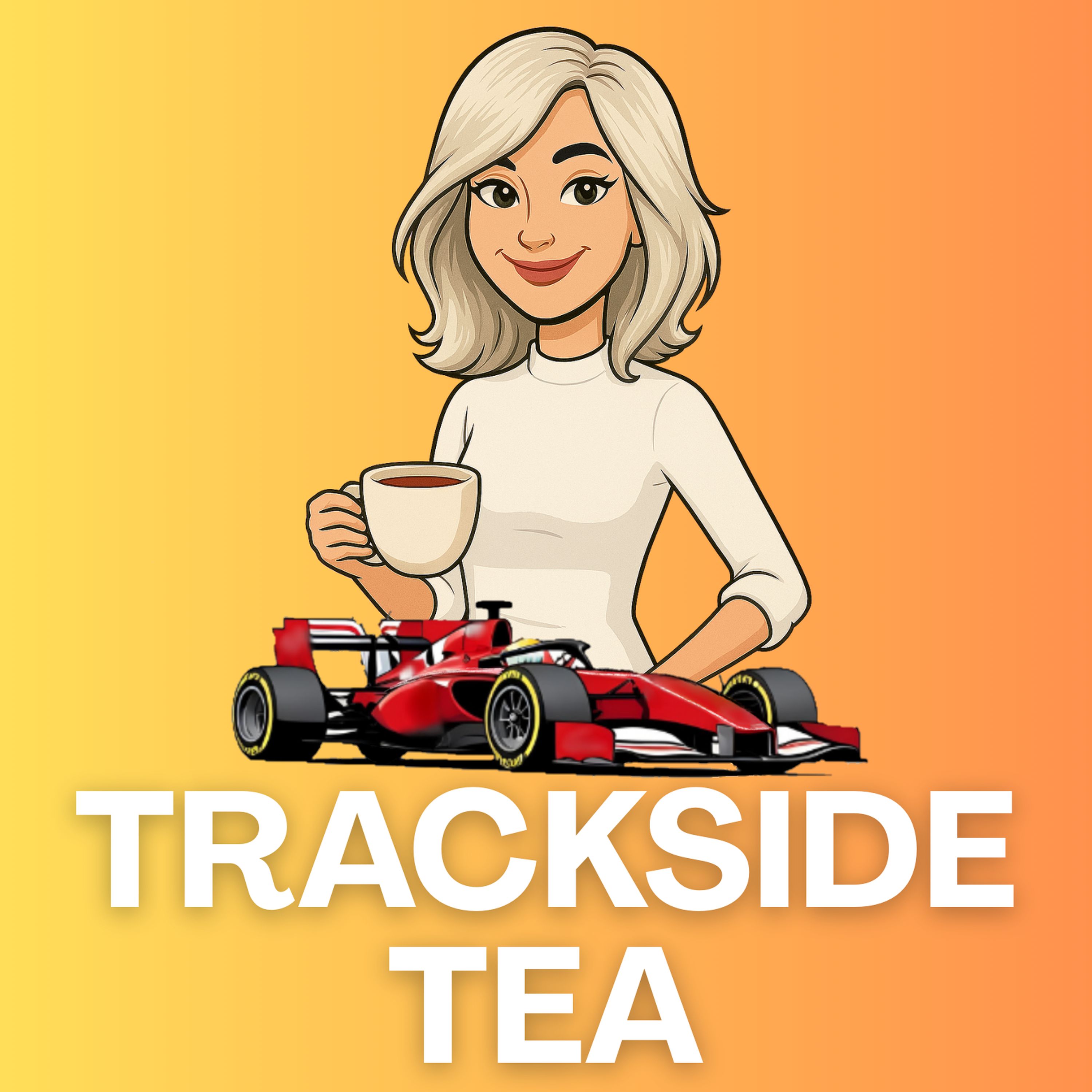F1 Tyres Explained? – A Simple Guide | Trackside Tea
Confused by softs, mediums, and inters?
This easy F1 tyre guide breaks it all down—no heavy jargon, just tea, tyre drama, strategyish, and fun, Trackside style!
#TracksideTea #F1Tyres #F1Podcast #F1BeginnerFriendly #Formula1 #Podsplainer #F1Fans #girlsintoF1
TRANSCRIPT
Hey.
Hey
And welcome to Trackside Tea, the podcast that proves you don't need a degree in aerodynamics to enjoy formula one.
Now there was no Grand Prix at the weekend.
So today I'm catching up with things that you've commented on and also I'm doing that pod splainer I've been wanting to do.
We're tackling something that seems simple but is weirdly confusing, f one tires.
Yep.
Those big round black things everybody yells about on race day.
So let's get into this.
What's the deal with tires in F1, and why does it matter?
What are these tire colors all about?
First off, Pirelli makes all the tires in f one.
No other brands, just Pirelli.
Every team, every car, they're all the same.
There are six different compounds of basic tyre which is basically the makeup of the tyre plus intermediates and full wet tires.
Each team is supplied with three of the basic tires which is decided before the race based on weather and track conditions mainly.
Now each tire has a color stripe on it: red, yellow, white, green and blue.
Each one has a different use I suppose is a reasonable way of putting it.
Different weathers need different tire types.
So let's work through the days.
A normal dry race weekend.
Now a dry one you would have red, yellow and white.
Red is the soft tire, the fastest but wears out quickly.
Yellow medium tire.
It's balanced not too fast, not too slow.
White hard tyre slower but it does last a lot longer.
So basically it's speed versus durability trade off.
Soft as your sprinter, hard as your marathon runner and medium is your steady jogger.
But what about the wet races?
Rain?
Chaos like in Silverstone this year but I also seem to remember Belgium was horrendous last year.
We had a friend sat on one of the hills in the pouring rain.
Poor Hedley.
So cue the wet tyres.
Green intermediate.
Light rain with a damp track.
Blue is full wet.
Heavy rain, big puddles, chaos mode fully on.
You'll hear commentators say things like 'they've gone to Winters' and now you can nod along like we totally get it but of course we actually do get it now so that's not too bad.
What are the tire rules?
Okay so the FIA, which is basically the f1 rule bosses, says that in dry races drivers must use two different tyre types during the race.
That's why you'll hear things like mandatory pit stop.
So if they start on mediums they'll have to switch to either soft or hard at some point.
They can obviously change more than that but they have to use at least two different types.
No exceptions.
Unless it rains.
And basically in a wet race the rules go out the window and the teams can do pretty much whatever they want.
How do teams decide what to use?
This is where strategy comes in like a game of chess but at 200 miles an hour.
Want to start fast?
You go for softs.
Want to run long and avoid traffic?
Hard tyres are the ones to go for.
Trying to split the difference?
Go for mediums.
Weather, track temperature, how good be the surface is?
All of that factors in.
It's why sometimes drivers complain about being on the wrong tyre because it really can make or break a race.
As much as the crew can help it is only the driver that can feel how the tires are when he's driving.
Any fun tire drama?
Absolutely.
F1 and tire drama go hand in hand together like tea and biscuits.
Back in the day teams used to explode tyres from pushing too hard or there are the moments when everyone goes on inter too soon and ends up sliding around like bambies on ice.
But based on what I said before and the driver being the best judge sometimes, Nico Hulkenberg proved that at Silverstone with his podium whim and he got there by ignoring his crew and staying on the tires he was on when they told him to change because he just felt right and then changing them when they told him not to.
Perfect for him and all down to the tires.
Tires aren't just rubber, they are drama and now you get the drama too.
So what have we learned?
So next time you hear softs, inters or they're struggling for grip you'll know it's all about tyre choice and when a driver pits early or late that's strategy baby!
Remember you don't need to know tyre pressure or wear percentages to enjoy the race but now you've got enough tyre tea to feel in the know.
So what have you all been chatting about?
I asked a couple of questions this week on my stories on Instagram.
One.
Who was your driver of the day at Silverstone?
Not including Lando as he is a given having won it.
Two.
Who do you think created the most drama at Silverstone?
So for number one we did have a couple of Landos.
I'm assuming a few people didn't actually listen to my story, they just read the question which is fine, very cool, thank you for joining in anyway.
But without a doubt Nico Hulkenberg won the day for everyone else and it was well deserved.
And the drama creators really seem to have two options crop up.
It seems we have Oscar Piastri's penalty, which was a little bit of drama I have to say, and The Rain.
The Rain was definitely the best drama maker of the day with slippy ground and a few spins.
And now you know what tyres they should have been on.
That's it for Trackside T today.
Catch you next time for another Natter podsplainer.
One more week off and it's back to the Belgian Grand Prix.
Don't forget to follow and slide into our DMs with your questions and answers @tracksideteawithrebecca on Instagram and @tracksidetea on YouTube.


